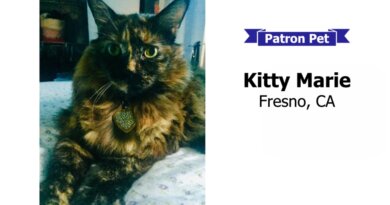Hill’s Surveyed Pet Owners Regarding Low Copper Claims – Truth about Pet Food
There is no regulation or law that limits the level of copper in pet food. Over the past several years, there has been much debate in the pet food industry, with veterinarians and regulatory authorities regarding copper levels in pet food – many believe the levels of copper in pet food (with no maximum requirement) is linked to an increase of copper storage disease seen in dogs. The Association of American Feed Control Officials (AAFCO) put together a working group that included veterinarians, nutritionists, and industry representatives – but the group could not come to any decision. AAFCO followed that with a proposal for a low copper label claim for pet foods, (if approved) allowing manufacturers to voluntarily guarantee a maximum level of copper in their pet foods with a ‘Reduced Copper’ or ‘Low Copper’ claim on the pet food label.
Of significance, the proposed low copper or reduced copper pet food label claim is NOT a level below the current minimum required level. It is not ‘low’ exactly – the proposed rule basically only establishes a maximum level of copper (a nutrient that currently has no maximum level – any level of copper above the required minimum is currently allowed in pet foods).
The existing minimum level of copper required in an Adult Dog Food is 7.3 mg/kg based on dry matter (with no maximum).
The proposed low copper dog food label claim has the same minimum copper requirement, but includes a maximum of 15 mg/kg based on dry matter.
Even though this should be a simple decision to approve, some in the pet food industry have argued (and argued) against this potential new rule. AAFCO has taken comments on the rule, and now Hill’s Pet Food has performed a pet owner survey – we assume they will use to submit to AAFCO against allowing a low copper pet food claim.
Hill’s stated they performed the pet owner survey to investigate “pet owner awareness of dietary copper in pet food and the impact that a ‘low, moderate, or controlled copper’ claim would have on their purchase intent.”
“Participants were asked about their familiarity with copper and why it is added to pet food. Then, they were asked what certain claims about copper meant and how it would impact their pet food purchasing behaviors.”
Hill’s argues that because the majority of pet owners surveyed (78%) did not know why copper is added to pet food, they could be influenced to purchase a pet food labeled as low copper. “Overall, these results indicate that pet owners are largely influenced by nutrition claims on pet foods, even when they are unfamiliar with a particular nutrient. Additionally, these results support American Veterinary Medical Association’s position to not support claims pertaining to copper on an over-the-counter diet, and the decision to feed a reduced copper or other component-adjusted diet should be made in consultation with a veterinarian.”
Hill’s argument is weak, and a bit insulting to pet owners. Hill’s makes an issue of pet owners being influenced by low copper pet food label claims because they don’t understand the clinical purpose of copper in the diet, however if the same survey was issued to veterinarians – how many vets could tell you exactly the purpose of copper in the diet? We safely assume not many (we asked a few, they did not know specifically why copper is a required nutrient).
Is Hill’s arguing against a low copper pet food because they want these products only available in higher priced veterinary diets? Is Hill’s more concerned about profits than a simple regulation that finally allows manufacturers to voluntarily guarantee a maximum of copper?
Wishing you and your pet(s) the best,
Susan Thixton
Pet Food Safety Advocate
Author Buyer Beware, Co-Author Dinner PAWsible
TruthaboutPetFood.com
Association for Truth in Pet Food

Become a member of our pet food consumer Association. Association for Truth in Pet Food is a a stakeholder organization representing the voice of pet food consumers at AAFCO and with FDA. Your membership helps representatives attend meetings and voice consumer concerns with regulatory authorities. Click Here to learn more.
What’s in Your Pet’s Food?
Is your dog or cat eating risk ingredients? Chinese imports? Petsumer Report tells the ‘rest of the story’ on over 5,000 cat foods, dog foods, and pet treats. 30 Day Satisfaction Guarantee. Click Here to preview Petsumer Report. www.PetsumerReport.com
Find Healthy Pet Foods in Your Area Click Here

The 2024 List
Susan’s List of trusted pet foods. Click Here to learn more.

The 2023 Treat List
Susan’s List of trusted pet treat manufacturers. Click Here to learn more.




